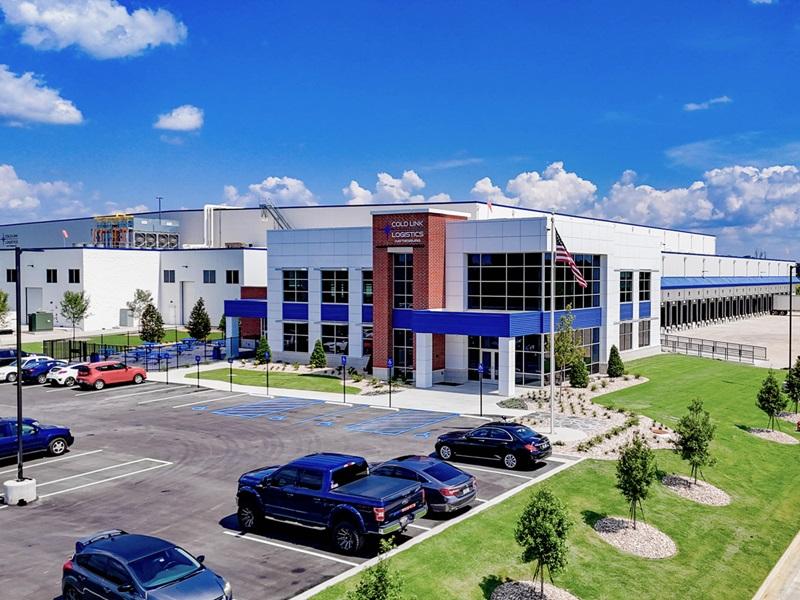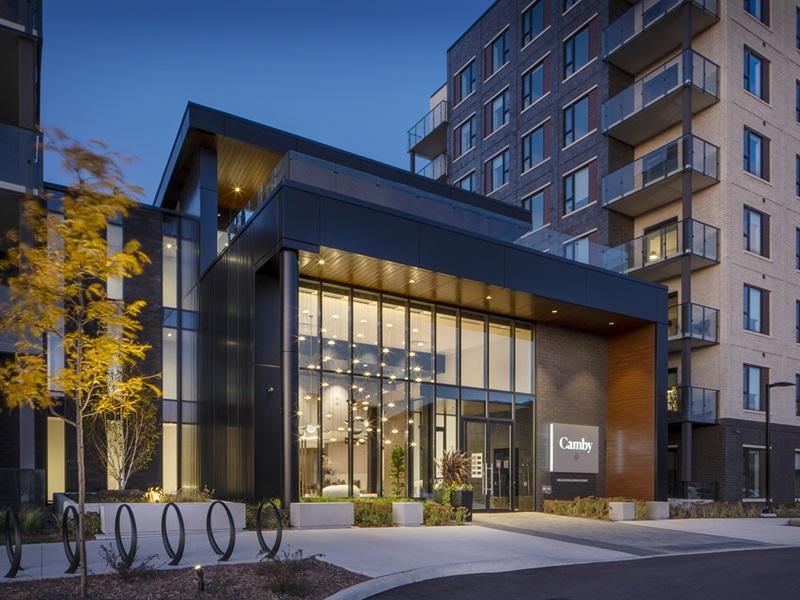Before the pandemic struck, the purpose-built rental apartment market was one of the soundest asset classes in Canadian commercial real estate.
Though apartment building deal-making slowed down a year ago along with everything else during the first-wave lockdown, the appetite quickly rebounded late in 2020 and is now showing signs of dramatic acceleration in terms of demand and pricing.
Colliers conducted a national panel discussion on Canada’s regional rental apartment building market to offer a snapshot of the state of each city and to forecast where each market appears to be heading.
This is the second instalment of our two-part series, focusing on Moncton, Halifax, Montreal and Toronto. Click here for part 1, which focuses on Victoria, Vancouver and Calgary.
MONCTON: Bill Hennessey, managing director, New Brunswick
On the pandemic accelerating New Brunswick’s hot market
Before the pandemic, the multifamily residential market was solid; demand was consistent and there was an uptick in new development.
Since the pandemic hit, Canadians from around the country have started moving East, looking for a change in lifestyle now that many of us have more options due to remote working. The cost of living here is lower, so families see great value.
One of the silver linings in this pandemic is that demand and value for apartment buildings have been increasing.
On demand and development surging in Moncton
The vacancy rate is around two per cent, so rent prices have seen upward pressure and new developments are emerging everywhere. Moncton issued a record-high number of building permits for multifamily builds over this past year.
At the same time, despite all the new projects that started before COVID-19 coming online now, the vacancy rate has remained low. Developers are still announcing new projects and rental rate is holding steady.
On the investment side, multifamily is strong. I think the vacancy rate is going to be lower in 12 months than it is today, despite all the capital fighting for space.
On building costs and policy threats
There has been talk about new rent control polices coming into play and that would be really tough on a market that is just hitting its stride.
In addition, the cost of materials has seen a 30-40 per cent increase this year and availability of labour in sub-trades is non-existent. That’s going to lead to an increased cost per door, which will cause rents to go up or, if rent control becomes reality, investment to slow in the space.
HALIFAX: Greg Taylor, managing director, Nova Scotia
On COVID-19 failing to tamp down record-setting numbers
We saw a pause when the pandemic originally hit. Rents had been going up, but Nova Scotia put in temporary rent controls as a response to the pandemic.
Supply was already incredibly tight. There was tension in the market due to tight supply and rising rents.
However, by the time June rolled around, business was starting to get back to normal. Now, we’re seeing Halifax’ strongest-ever multifamily market.
On demand outpacing new supply in Halifax
Our market will stay on an upward trajectory for the next decade. Halifax is on a roll in terms of population growth. In July 2020, the population was about 448,000, an all-time high.
There’s growing demand and constraint on supply, so there is pressure on the market and the only relief that could materialize is an increase in prices, given the lag in increased supply. As an investor, you have an opportunity to come into a market where supply is tight — and generally speaking — the quality is strong.
We still do not yet have enough product in the pipeline to meet the growing demand.
On the opportunity for investors
This is an exciting market to invest in and it’s going to be an exciting one as well for apartment developers. There is no reason to think that this won’t carry on for another decade.
The biggest concerns and constraints now are challenges to our supply chain. If our suppliers can’t maintain an inventory of building materials, then the construction stream will slow down.
In addition, Halifax isn’t known for being quick on approval timelines and that needs to be improved.
TORONTO: Dayma Itamunoala, associate VP, sales representative
On new institutional money coming to Toronto
There was brief uncertainty at the start of the pandemic, but multifamily is on fire.
Right now, institutional capital is seeking predictability, stability and feasible financing. For them, multifamily is the perfect asset class, and due to the strong fundamentals in the city, the GTA is the ideal location.
As a result, we’ve seen deal activity accelerate this year above Q1 2020 levels. We’re seeing a whole new set of purchasers aggressively bidding on deals, vying for a foothold in the market.
On steady demand creating secure investments
We saw higher vacancy downtown, especially in newer assets that typically demand premium rents. We’re currently at a 14-year rental vacancy high of 3.4 per cent, up from 1.5 per cent a year ago.
More than 340,000 immigrants enter Canada each year and a third of those newcomers typically settle in the GTA. That number has been cut in half due to the pandemic, but it won’t stay that way.
With Canada mandating increased immigration to 1.2 million people over the next three years, demand will return in a big way.
In Toronto, the barriers to home ownership have continued to increase with the average home now selling for over $1 million. On the supply side, rising construction costs, in addition to policies like inclusionary zoning in Toronto, only serve to limit the supply and increase the need for new housing.
All these factors mean that owning multifamily in the GTA – especially while you can buy below replacement cost – is only becoming more attractive.
On healthy optimism and potential risks
I’m quite optimistic for Toronto’s multifamily sector.
The industry is going through an exciting transformation. Many owners who have held assets for over 50 years are cashing out due to the attractive selling environment.
Market headwinds are also important. Many of our clients are extremely concerned about a potential capital gains increase next year. With the U.S. paving the way for a tax hike, it’s not unreasonable to expect the same in Canada and this would have a major impact on our market.
Policy changes around rent control also present a looming threat. Even with a Conservative premier, guideline increases were restricted in Ontario in 2020. Increased rent control measures could put a lot of pressure on owners and it’s happened before.
MONTREAL: Joe Rullier, VP, commercial real estate broker
On downtown rentals experiencing the hardest hit during the pandemic
Montreal is approaching a 2.7 per cent rental vacancy rate and that’s disproportionately affecting our downtown core. The suburbs are staying strong, but downtown went from 1.2 per cent to 3.2 per cent, mainly due to fewer students.
Our market is similar to Toronto on the investment side, but the biggest difference is that our price per foot on the rental side is still affordable compared to Vancouver or Toronto.
We, too, are starting to see new institutional players coming to town looking for investment. We’re back in gear and seeing a lot of deals.
On purchasing outpacing inventory
It’s still a seller’s market. There is not enough supply to match demand.
We’re now an attractive market to institutional buyers from Vancouver and Toronto. Montrealers tend to rent rather than own compared to other Canadian big-city dwellers, so the market has been healthy as investors are looking long-term.
Interest rates remain low and banks are ready to loan on multifamily buildings. The only problem is that there’s not enough product on the market.
On success depending on immigrants, students
I’m looking forward to immigration returning or surpassing our normal figures. I’m optimistic students will also be returning to Montreal.
The cost of construction went up 30 per cent during the pandemic, so I’m hopeful construction prices will stabilize post-pandemic.
We are fortunate that multifamily real estate is likely the safest asset class in this market. That’s why the banks are lending like they are and that’s why we are seeing more investors.
Our biggest risks are rising interest rates and ensuring that the borders open and schools resume so we can fill up those buildings.









